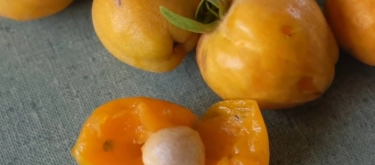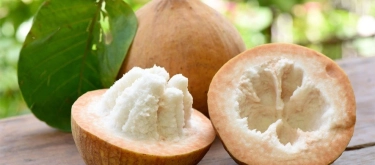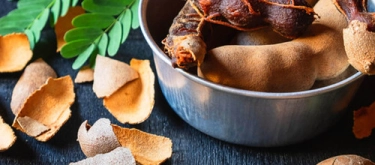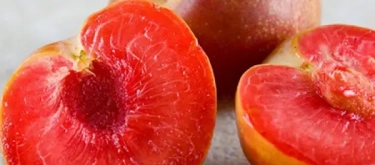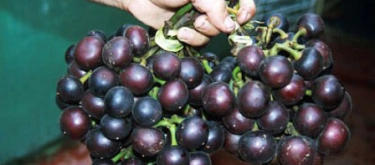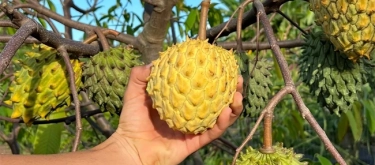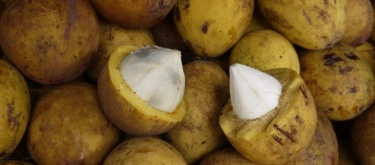Marula: Taste Profile, Aroma, Benefits and Health Risks
Marula (Sclerocarya birrea, commonly known as Marula Fruit) originates from the sub-Saharan regions of Africa. Known widely for its use in beverages like the famed Amarula cream liqueur, the fruit has significant nutritional, cultural, and economic importance across southern Africa, cherished for its juicy pulp and oil-rich kernels.
Marula fruit is safe for most individuals. However, those with nut allergies should be cautious due to the edible kernels inside the seeds. Excessive consumption of ripe fruit may cause digestive discomfort due to its mildly laxative properties.
What does Marula taste like?
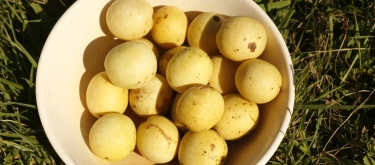
Complete Sensory Description:
Taste
Marula fruit features a refreshingly sweet-tart flavor, subtly tropical with a distinctive tanginess reminiscent of ripe plums, apricots, and hints of citrus.
Aroma
Its aroma is fragrant, fruity, and mildly tropical, with notes evoking ripe guava, melon, apricot, and subtle undertones of citrus blossoms.
Texture
The fruit has a thin, leathery skin and succulent, fibrous pulp surrounding a large, hard seed. The texture is juicy, soft, and slightly fibrous, offering a pleasant mouthfeel. The edible kernel inside the seed has a crunchy texture similar to almonds.
Appearance
Marula fruits are small (about 3–5 cm in diameter), oval to round, turning from green to pale yellow when ripe. The inner pulp is translucent, pale yellow to creamy-white, surrounding a large seed with multiple chambers.
In-depth Flavor Analysis:
The complex flavor of Marula fruit arises from its balanced composition of sugars (mainly sucrose, glucose, and fructose) and organic acids such as citric, malic, and tartaric acid, creating its characteristic sweet-sour profile. The fruit’s aromatic profile results primarily from volatile esters, terpenes, and aldehydes, including ethyl acetate, benzaldehyde, and linalool, which lend fruity, floral, and slightly nutty notes. Climate and ripeness strongly influence these aromatic and flavor profiles, with fruits grown in drier climates having intensified sweetness and a richer aromatic complexity. The kernels contain beneficial fatty acids, such as oleic and linoleic acids, giving them a mild, nutty taste when roasted.
Varieties and Culinary Applications:
Marula is mainly consumed in two primary ways:
- Fresh Fruit Consumption: Fruits are eaten fresh, directly peeled, or the juice and pulp extracted.
- Beverages and Spirits: Widely fermented into traditional African beer and internationally famous Amarula liqueur, prized for its sweet, creamy character.
Additional culinary applications include:
- Preserves and Sauces: Marula pulp is popular in jams, preserves, sauces, chutneys, and marinades.
- Desserts: Commonly used in sorbets, ice creams, mousses, and fruit-based desserts.
- Oil Extraction: Marula oil, extracted from kernels, is esteemed in culinary and cosmetic uses.
Selection and Storage:
When selecting fresh Marula fruit, look for fruits with pale yellow skin, slightly soft to the touch, emitting a pleasant aroma. Avoid overly firm or bruised fruits. Store ripe Marula at room temperature for immediate consumption, or refrigerate to prolong freshness for up to a week. Pulp and kernels can be frozen or dried for longer preservation.
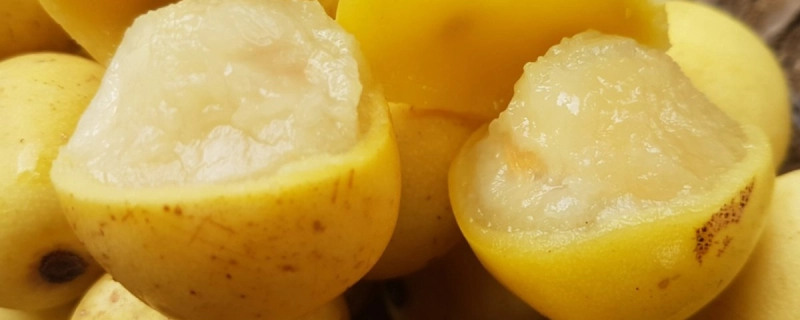
Nutritional Insights:
Marula fruit provides essential vitamins, notably vitamin C (higher content than oranges), antioxidants, dietary fiber, and minerals such as potassium, magnesium, and calcium. Marula kernels are rich in unsaturated fatty acids and vitamin E, beneficial for skin and overall health. Regular consumption supports immune function, skin health, and provides antioxidant protection.
Expert Insights & Culinary Tips:
- Flavor Pairings: Marula pairs exceptionally well with other tropical fruits like mango, pineapple, and banana, enhancing fruit salads, beverages, and desserts.
- Kernel Usage: Roast kernels lightly to enhance their almond-like flavor, ideal for salads, baking, or snacks.
- Culinary Balance: Utilize the fruit’s balanced sweet-acidic profile to complement rich or creamy dishes, desserts, and beverages.
Interesting and Curious Facts:
- Marula fruit fermentation in the wild is famously associated (often exaggeratedly) with wildlife intoxication, leading to cultural myths about animals becoming drunk after consuming fermented fruit.
- The Marula tree has deep cultural and traditional significance in African communities, symbolizing fertility, nourishment, and abundance.
- Archaeological evidence suggests Marula fruits were consumed by humans as early as 10,000 years ago.
Harm and Dietary Considerations:
Marula fruit is generally safe, but overconsumption may lead to digestive disturbances due to mild laxative properties. Individuals with nut allergies should avoid consuming Marula kernels. Pregnant and breastfeeding women can safely consume moderate amounts, although they should avoid alcoholic products derived from Marula fruit.
Religious Dietary Considerations:
Marula fruit is permissible and has no known dietary restrictions across major religious traditions, including Halal, Kosher, and Hindu vegetarianism, as long as the fruit is consumed fresh and alcohol-containing products are avoided where required by religious dietary laws.
Final Thoughts & Sensory Journey:
Marula fruit encapsulates the essence of African savannas—its tantalizing sweetness balanced by bright acidity, subtly nutty undertones, and a fragrance capturing tropical warmth. Beyond its delicious taste, Marula represents the harmonious integration of traditional practices, nutrition, and biodiversity conservation, making it a uniquely treasured fruit.
Resources:
- "Food Plants of Africa" by Ben-Erik van Wyk (Briza Publications, 2005)
- "Lost Crops of Africa: Volume III: Fruits" by National Research Council (National Academies Press, 2008)
- "Fruits and Nuts: Genome Mapping and Molecular Breeding in Plants" edited by Chittaranjan Kole (Springer, 2007)
